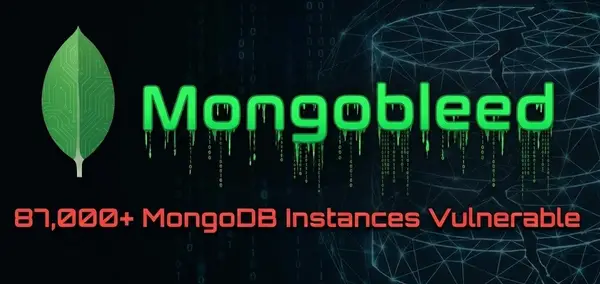UK Bans Ransomware Payments: A New Era in Fighting Cyber Extortion

Bottom Line Up Front: The UK has officially banned public sector organizations and critical infrastructure operators from paying ransomware demands, marking a historic shift in cybersecurity policy. While this bold move aims to disrupt criminal business models, ransomware groups are escalating to multi-layered extortion tactics that go far beyond simple data encryption, creating new challenges for organizations worldwide.
The UK Takes a Stand: Historic Payment Ban Goes Live
In July 2025, the UK government officially moved forward with groundbreaking legislation that prevents operators of critical national infrastructure, the NHS, local councils and schools from giving in to digital extortionists. This represents one of the most significant policy shifts in the global fight against ransomware.

What's Covered by the Ban
The comprehensive ban applies to:
- All public sector bodies including NHS trusts, local councils, and schools
- Critical National Infrastructure (CNI) operators in energy, water, transportation, health, and telecommunications
- Government departments (expanding existing restrictions)
The UK Government details three specific proposals in the Consultation to tackle the problem of ransomware in the UK: 1. a ban on ransomware payments being made by public sector bodies and owners and operators of Critical National Infrastructure ("CNI"), such as energy supply, water supply, transportation, health, and telecoms; 2. the introduction of a ransomware payment prevention regime; and 3. the implementation of a ransomware incident reporting regime.
The Numbers Behind the Decision
The policy comes in response to alarming statistics. Ransomware, considered by British authorities to be the UK's greatest cybercrime threat, costing the nation billions of pounds and with the capability to bring essential services to a standstill. Recent high-profile attacks on organizations like Marks & Spencer and Co-op have heightened public awareness, with Co-op's CEO confirming that all 6.5 million of its members had had their personal data stolen.
Beyond the Ban: A Three-Tier Approach
1. Payment Prevention Regime for Private Sector
Organizations not covered by the outright ban face new requirements. Organisations and individuals that fall victim to ransomware (save for those covered by the ban set out in Proposal 1) would be required to notify the authorities of their intention to make a ransomware payment (within 72 hours of the ransom being sought) before sending funds to the criminals responsible.

This system serves multiple purposes:
- Sanctions compliance: Prevents payments to sanctioned criminal groups
- Intelligence gathering: Provides law enforcement with actionable data
- Support provision: Offers guidance and alternative solutions

2. Mandatory Incident Reporting
Businesses and individuals affected by ransomware would be required to report the attack to authorities, regardless of whether they intend to make a ransom payment. This reporting requirement includes:
- Initial notification within 72 hours
- Comprehensive analysis within 28 days
- Full cooperation with authorities
3. Consultation Results and Public Support
The policy development was informed by extensive stakeholder engagement. The UK Home Office consulted on the proposals from Jan. 14 to April 8 and received 273 responses, 57% identified as organizations, 39% individuals and 4% are classed as other. Nearly three-quarters agreed that a targeted ban on ransomware payments was warranted.
The Criminal Response: Evolution of Extortion Tactics
As governments tighten the screws on ransom payments, cybercriminals are adapting with increasingly sophisticated multi-layered extortion strategies.
From Single to Multi-Extortion: The Criminal Evolution
Traditional Single Extortion
Typically, a single extortion tactic follows five steps: Intrusion: The attack gains initial access via phishing, vulnerability exploit or other methods (sometimes followed by privilege escalation and/or lateral movement) Infection: The malware payload is downloaded and installed on the target device or system · Encryption: The attacker encrypts the victim's data or systems, rendering them inaccessible.
Double Extortion: The New Standard
Double extortion first emerged as a trend in 2019, with notable ransomware groups Maze and Revil demanding an additional ransom in exchange for not releasing data they had exfiltrated during ransomware attacks. This trend is now, unfortunately, the norm.
The first quarter of 2025 saw a record-breaking 126% increase in extortion attacks, with cybercriminals realizing that traditional backups no longer provide adequate protection against data theft threats.

Triple Extortion: Maximum Pressure
Triple extortion attacks add devastating third layers of coercion:
DDoS Attacks: The attacker disrupts the victim's online services or infrastructure with a DDoS attack alongside the ransomware attack, creating the impression that the victim is under siege
Third-Party Targeting: The attacker targets the victim's customers, partners or suppliers with similar extortion tactics, creating a cascading effect
Market Manipulation: The attacker threatens publicly traded companies by offering short stock opportunities to unscrupulous traders

Regulatory Pressure: The attacker informs its victim of the sanctions and fines it would need to pay to the authorities if the data exposure resulting from the attack was made public
Real-World Triple Extortion in Action
Recent examples demonstrate the devastating impact of these evolved tactics:
NHS Scotland Attack: A ransomware group hacked the National Health Service in Scotland, UK, and threatened to publish three terabytes of data. The cybercriminals published a "proof pack" of confidential information on their darknet site to encourage the NHS to pay the ransom.
Durant, Oklahoma: In June 2025, a ransomware gang targeted the city government of Durant, Oklahoma, USA, stealing over 800 GB of sensitive data. In addition to the data breach, city services, including digital payments, were disrupted. The attack combined data theft, public pressure, and service outages, making it a clear example of triple extortion in action.
The Financial Reality: Record-Breaking Payments and Costs
Soaring Ransom Demands
The financial stakes have never been higher:
- According to the Sophos "State of Ransomware 2024" report found the average ransom payment rose from $400,000 in 2023 to $2 million in 2024 -- an increase of 500%
- The average ransom in 2024 is $2.73 million, almost an increase of $1 million from 2023
- From 2019 to 2024, the average ransom demand has increased by 4,559%
Global Impact Reaches New Heights
Ransomware payments in 2023 surpassed the $1 billion mark, the highest number ever observed, while approximately $813.55 million was spent on ransomware payments in 2024.
The total cost extends far beyond ransom payments. In 2024, the average cost of a ransomware attack was $5.13 million, including ransom payments, recovery costs, and indirect damages like reputational harm, with projections suggesting the average ransomware attack cost in 2025 to be between $5.5M and $6M.

Industry-Specific Targeting Intensifies
Healthcare Under Siege: The healthcare sector experienced a 50% YoY increase in attacks, becoming the most targeted vertical in 2024, with 92% of US healthcare organizations surveyed experienced at least 1 cyber attack in the past 12 months, with 70% reporting disruption to patients.
Geographic Concentration: North America accounted for 54% of all ransomware data leak sites (DLS), making it the most attacked region globally.
The Criminal Innovation Arms Race
Ransomware-as-a-Service (RaaS) Proliferation
RaaS users — known as affiliates — access the ransomware tools in exchange for a slice of the profits, typically through pre-arranged revenue splits with the RaaS operators. What's more, the level of professionalism and sophistication among RaaS providers is advancing. Some offer round-the-clock support, regular updates, and even negotiation services.

Accelerated Attack Timelines
According to Sophos, the median dwell time for ransomware cases in 2025 is down to just 4 days — a dramatic shift from previous years. For comparison, Mandiant reported a global median dwell time of 16 days across all breaches in 2022.
Advanced Multi-Extortion Techniques
Criminal groups are employing increasingly sophisticated tactics:
Internal Deception: FBI investigations identified that after paying the ransom, one victim was contacted by a separate Medusa actor who claimed the negotiator had stolen the ransom amount already paid, representing a potential "triple extortion scheme."
Supply Chain Targeting: In 2024, at least 35.5% of all data breaches originated from third-party compromises, up 6.5% from 2023
Expert Concerns and Industry Reactions
Implementation Challenges
Security experts have raised several concerns about the payment ban's effectiveness:
Circumvention Risks: Kev Breen, senior director of cyber threat intelligence at Immersive Labs, said: "If the option is to recover quickly by paying, versus not being able to recover because you're banned from doing so, the temptation may be to pay and simply not report it".
Displacement Effects: Mark Jones, a partner at Payne Hicks Beach, said: "It is unusual for victims of a crime to be required by law to report that they have been a victim. Banning ransom payments risks criminalising the victims and may push ransomware groups further underground".

International Perspective: Jones also referenced a survey in Italy, where payments are banned under existing laws but 43% of companies still admit to paying.
Moral and Practical Dilemmas
There are many moral considerations here. While it's always easy to say 'never pay,' the reality is far murkier. Some organizations have paid ransom demands not to recover infrastructure, but to prevent the public release of large volumes of personally identifiable information (PII) – where the damage to individuals could be far greater than a service being offline.
Looking Ahead: The Future of Ransomware Defense
Government Response Evolution
The UK's approach represents a broader trend toward aggressive government intervention. Security Minister Dan Jarvis said: "Ransomware is a predatory crime that puts the public at risk, wrecks livelihoods and threatens the services we depend on. That's why we're determined to smash the cyber criminal business model and protect the services we all rely on".
Technological and Tactical Adaptations
As defensive measures improve, criminals continue to evolve:
- Faster attack execution to evade detection systems
- More sophisticated social engineering targeting remote workers
- AI-enhanced attack capabilities for better targeting and automation
- Supply chain focus to maximize impact with minimal effort

The Payment vs. Recovery Paradox
Despite the risks, the proportion of ransomware victims that gave in to ransom demands dropped to an all-time low of 29% in Q4 of 2023. However, 97 percent of organizations whose data had been encrypted got it back, suggesting improved backup and recovery capabilities.
Strategic Implications for Organizations
Beyond Traditional Defenses
The evolution to multi-extortion tactics means traditional cybersecurity approaches are insufficient:
- Data Protection: Encryption at rest and in transit becomes critical
- Supply Chain Security: Third-party risk management is essential
- Incident Response: Plans must account for multi-vector attacks
- Insurance Coverage: Policies need updating for new risk profiles
- Legal Preparedness: Understanding compliance requirements across jurisdictions
The Human Factor
Almost 40% of enterprises had to lay off employees after an attack, and 35% experienced C-level resignations, highlighting the human cost beyond financial losses.
Conclusion: A New Chapter in Cyber Warfare
The UK's ransomware payment ban represents a pivotal moment in cybersecurity policy, but it's just one piece of a much larger puzzle. As governments take increasingly aggressive stances against cybercriminal funding, threat actors are responding with more sophisticated, multi-layered extortion tactics that challenge traditional defensive approaches.
The shift from single to triple extortion demonstrates that ransomware has evolved far beyond simple data encryption. Today's cybercriminals orchestrate complex campaigns designed to apply maximum pressure through data theft, service disruption, third-party targeting, and reputational damage.
Organizations must adapt their defenses accordingly, moving beyond traditional backup-and-restore strategies to comprehensive risk management that accounts for data protection, supply chain security, regulatory compliance, and multi-stakeholder impact scenarios. The criminal innovation arms race shows no signs of slowing, making proactive, multi-layered defense strategies more critical than ever.
As the UK leads the charge in policy innovation, the global cybersecurity community watches closely to see whether government intervention can meaningfully disrupt criminal business models or simply push the threat into new, potentially more dangerous territories. The stakes have never been higher, and the outcome will shape cybersecurity strategy for years to come.

The fight against ransomware requires unprecedented cooperation between government, industry, and international partners. While the UK's payment ban is a bold first step, the ultimate victory will depend on sustained, coordinated efforts to address both the technical and economic foundations of cybercrime.















